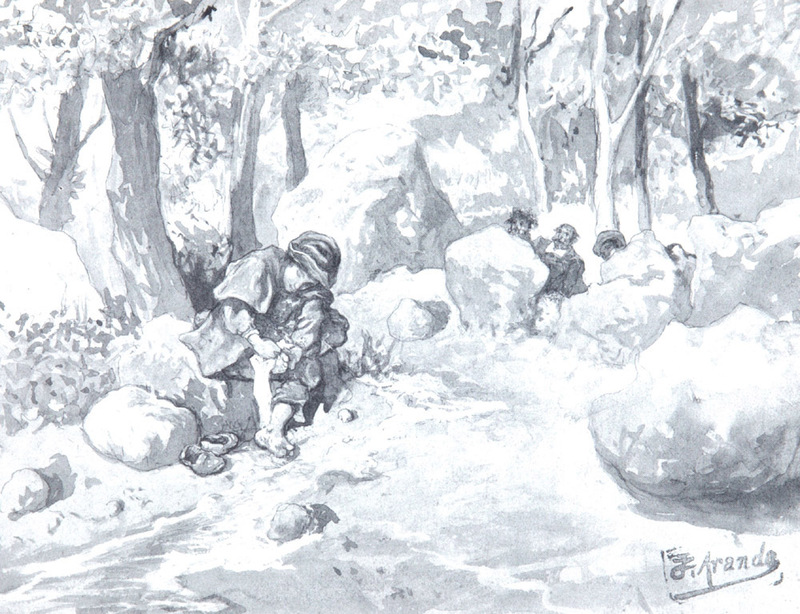Images of Dorotea
For centuries, the story of Don Quixote has been represented within many different media, including visual representations of the misadventures of our valiant knight. What is most interesting is they are all different interpretations of the same story.
I have chosen to compare two different illustrations of the passage where we first meet Dorotea. She is washing her feet in the river, and described to be dressed as a young boy while the barber, priest, and Cardenio admire “his” beauty.
The first image was printed in the 1863 French edition of Don Quixote by the artist Gustave Doré. Drawn in the 19th century, the illustration has the characteristic touches of Romanticism. With freedom of interpretation, Doré portrayed Dorotea more feminine than originally described in the text. The young “boy” in this illustration has beautiful flowing hair surrounded by grandiose scenery. This portrayal could be attributed to what art historians call “romantic originality” where originality was essential. By feminizing the cross-dressed Dorotea, Doré has deliberately ignored the written authority of Cervantes and created his own image. Furthermore, the Romantics emphasized the power and vitality found in nature. Doré shows a detailed interest in the scenery around Dorotea while completely ignoring other characters that should be in the scene. The detail of the surrounding forest speaks to the polished style of the French with an emphasis on clear, well-defined lines and precision. He draws with a sense of elegance portraying the captivating beauty of the farmer girl.
The second image is by José Jiménez Aranda from a 20th-century Spanish edition of the novel. Rather than put great detail into the character’s faces, Aranda uses a less defined stroke to create an abstract and ambiguous look. His simplification of the scene allows for broader interpretations, which supports Cervantes intended description of the cross-dressed Dorotea. These differing representations of the same narrative lead to varying interpretations as we can track this change throughout the annals of art history.
-- Natalie Leslie


